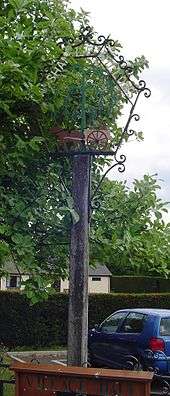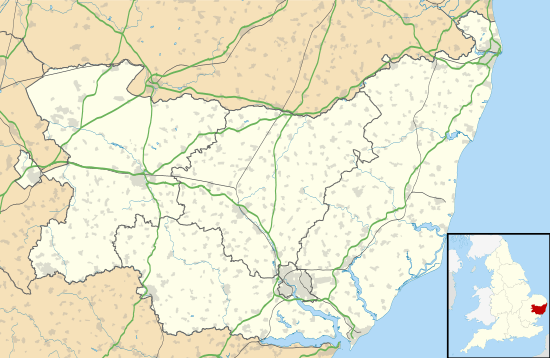Walsham le Willows
Walsham le Willows is a village in Suffolk, England, located around 2½ miles (4 km) south-east of Stanton, and lies in the Mid Suffolk council district. Queen Elizabeth I had granted Walsham le Willows to Nicholas Bacon, Lord Keeper of the Great Seal, in 1559.

Signpost of Walsham le Willows
| Walsham le Willows | |
|---|---|
 Walsham le Willows Location within Suffolk | |
| Population | 1,213 (2011)[1] |
| OS grid reference | TM004713 |
| Civil parish |
|
| District | |
| Shire county | |
| Region | |
| Country | England |
| Sovereign state | United Kingdom |
| Post town | BURY ST EDMUNDS |
| Postcode district | IP31 |
| Dialling code | 01359 |
Because the village is documented unusually fully in surviving records of the time, the Cambridge historian John Hatcher chose to use it as the setting for his semi-fictionalised account of the effects of the mid-14th century plague epidemic in England, The Black Death: A Personal History (2008).[2]
Sport and leisure
Walsham le Willows has a Non-League football club Walsham-le-Willows F.C. currently in the Eastern Counties League who play at Sumner Road.
Sources
- Kenneth Melton Dodd (editor), The Field-Book of Walsham-le-Willows 1577 (Ipswich: Suffolk Records Society, 1974).
gollark: But you don't know what it is yes.
gollark: Um. What was I doing?
gollark: <@!241757436720054273> == cryoapioform ALSO?
gollark: Try the xterm with color support then?
gollark: APIONET.
References
- "Civil Parish population 2011". Neighbourhood Statristics. Office for National Statistics. Retrieved 29 August 2016.
- Hatcher, John (2008). The Black Death: A Personal History. Cambridge, Massachusetts: Da Capo. p. 1. ISBN 0-306-81571-0.
This article is issued from Wikipedia. The text is licensed under Creative Commons - Attribution - Sharealike. Additional terms may apply for the media files.